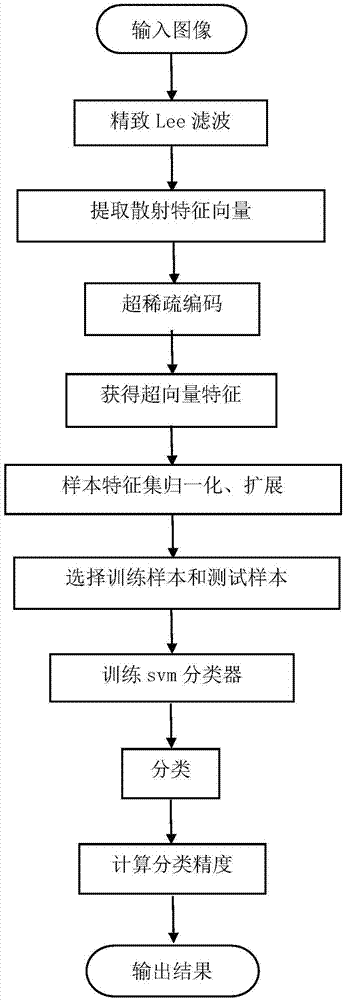Polarized SAR (Specific Absorption Rate) image classifying method based on super-vector coding
A super vector and image technology, applied in the direction of instruments, character and pattern recognition, computer components, etc., can solve the problems of no significant improvement in accuracy rate, low classification accuracy, and multiple wrong points, so as to improve classification Accurate, robust, less susceptible to noise effects
- Summary
- Abstract
- Description
- Claims
- Application Information
AI Technical Summary
Problems solved by technology
Method used
Image
Examples
Embodiment Construction
[0052] The present invention will be further described below in conjunction with the accompanying drawings.
[0053] refer to figure 1 , The specific implementation steps of the present invention are as follows.
[0054] Step 1. Input image.
[0055] Input the polarimetric synthetic aperture radar SAR image to be classified and the corresponding real object marker image.
[0056] Step 2. Perform refined Lee filtering on the polarimetric SAR image to be classified.
[0057] The refined polarimetric LEE filtering method is used to filter the polarimetric SAR image to be classified, remove the speckle noise, and obtain the filtered polarimetric SAR image. The steps are as follows:
[0058] In the first step, the sliding window of the refined polarization LEE filter is set, and the size of the sliding window is 7*7 pixels.
[0059] In the second step, the sliding window is moved from left to right and from top to bottom on the pixels of the input polarimetric SAR image, and ea...
PUM
 Login to View More
Login to View More Abstract
Description
Claims
Application Information
 Login to View More
Login to View More - R&D
- Intellectual Property
- Life Sciences
- Materials
- Tech Scout
- Unparalleled Data Quality
- Higher Quality Content
- 60% Fewer Hallucinations
Browse by: Latest US Patents, China's latest patents, Technical Efficacy Thesaurus, Application Domain, Technology Topic, Popular Technical Reports.
© 2025 PatSnap. All rights reserved.Legal|Privacy policy|Modern Slavery Act Transparency Statement|Sitemap|About US| Contact US: help@patsnap.com



